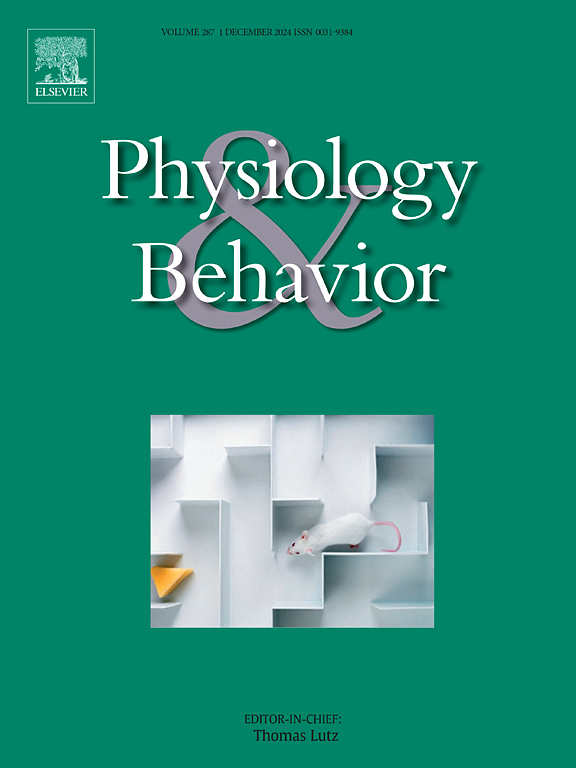Daily activity patterns of a near-threatened endemic wetland specialist, the Southern African vlei rat (Otomys auratus)
IF 2.4
3区 医学
Q2 BEHAVIORAL SCIENCES
引用次数: 0
Abstract
The genus Otomys exhibits diverse activity patterns in the field, making them ideal subjects for studying circadian biology. The Southern African vlei rat (Otomys auratus) has previously been categorised as diurnal or crepuscular, but also displays some nocturnal activity. This study aimed to confirm the temporal niche of vlei rats in a laboratory setting and examine changes in activity when provided with a running wheel. The length of the free-running period was also calculated. In this study, 75 % of vlei rats displayed nocturnal activity rhythms when housed without a wheel. Access to a running wheel reduced individual variation and led to an increase in overall activity counts. All individuals had free running rhythms in constant darkness, with a period shorter than 24 h, which is consistent with other nocturnal rodents. This demonstrates that vlei rats are more active in darker conditions, likely as a means of avoiding diurnal avian predators in wetland habitats. With this species at risk of local extinction, this study is an important first step in understanding the behaviour of vlei rats under controlled conditions. As this species is displaced when its habitat becomes disturbed it may act as a useful bioindicator of wetland health and disturbance level.
求助全文
约1分钟内获得全文
求助全文
来源期刊

Physiology & Behavior
医学-行为科学
CiteScore
5.70
自引率
3.40%
发文量
274
审稿时长
47 days
期刊介绍:
Physiology & Behavior is aimed at the causal physiological mechanisms of behavior and its modulation by environmental factors. The journal invites original reports in the broad area of behavioral and cognitive neuroscience, in which at least one variable is physiological and the primary emphasis and theoretical context are behavioral. The range of subjects includes behavioral neuroendocrinology, psychoneuroimmunology, learning and memory, ingestion, social behavior, and studies related to the mechanisms of psychopathology. Contemporary reviews and theoretical articles are welcomed and the Editors invite such proposals from interested authors.
 求助内容:
求助内容: 应助结果提醒方式:
应助结果提醒方式:


